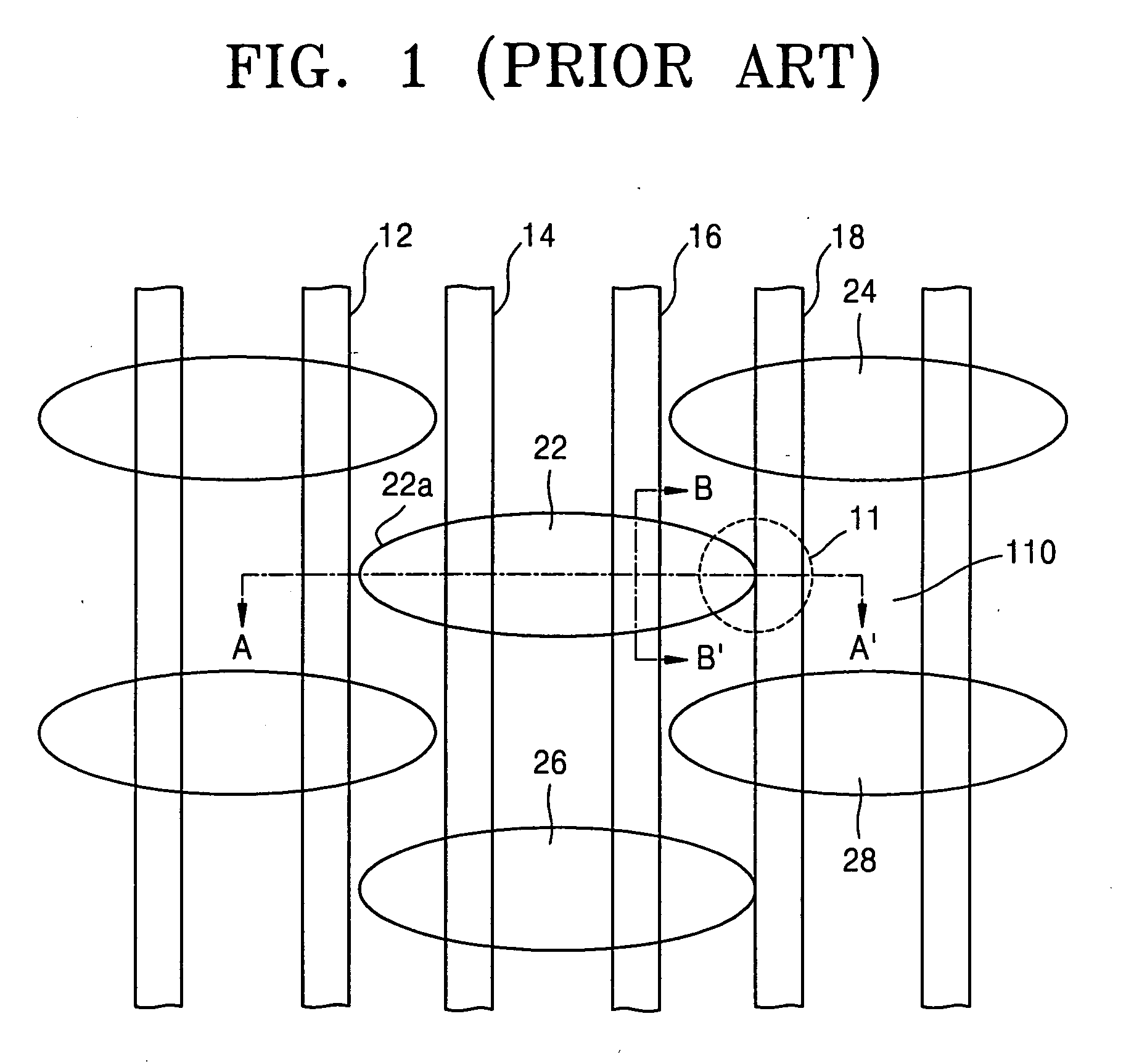Method of forming a recess channel trench pattern, and fabricating a recess channel transistor
a recess channel and trench pattern technology, applied in the field of recess channel trench pattern and recess channel transistor fabrication, can solve the problems of shortening the channel length, difficult control of influences, abnormal operation of the recess channel transistor, etc., and achieve the effect of avoiding residual substrate areas
- Summary
- Abstract
- Description
- Claims
- Application Information
AI Technical Summary
Benefits of technology
Problems solved by technology
Method used
Image
Examples
first embodiment
[0045]FIGS. 5A through 9B are sectional views showing a method of fabricating a recess channel transistor according to the present invention. The line A-A′ or B-B′ indicated by an arrow along the bottom portion of the figures denotes the respective drawing as a sectional view taken along line A-A′ or B-B′ of FIG. 4.
[0046] Referring to FIGS. 5A and 5B, a device isolating layer 210 with a STI structure is formed in a semiconductor substrate 200, thereby defining an active region and a field region. An impurity such as an n-type impurity with a conductivity opposite to that of the semiconductor substrate 200, is implanted to form source and drain regions (not shown) in the active region. A mask layer 215 is coated on the entire surface of the semiconductor substrate 200 including the device isolating layer 210. The mask layer 215 may be a photoresist layer or a hard mask layer such as a silicon nitride layer. When forming the device isolating layer 210, a STI liner 62a obtained by stac...
second embodiment
[0056]FIGS. 11A through 14B are sectional views showing a method of fabricating a recess channel transistor according to the present invention using the layout as shown in FIG. 10. Lines A-A′ and B-B′ designated in the bottom portion of the respective drawings indicate the respective sectional view taken along either lines A-A′ or B-B′.
[0057] Referring to FIGS. 11A and 11B, a mask layer pattern 315a is formed on a semiconductor substrate 300 formed with a device isolating layer 310 and source and drain regions (not shown) similar to those described with reference to FIGS. 6A and 6B. The mask layer pattern 315a is the isolated hole type as shown in FIG. 10. Accordingly, as shown in FIG. 11A when viewed from a section taken along line A-A′ of FIG. 10, the mask layer 315a is formed so the device isolating layer 310 is not exposed. Also, as shown in FIG. 11B when viewed from the section taken along line B-B′ of FIG. 10, the mask layer pattern 315a exposes the semiconductor substrate 300...
third embodiment
[0064]FIGS. 16A through 17B are sectional views showing a method of fabricating a recess channel transistor according to the present invention using the layout of FIG. 15. Lines A-A′ and B-B′ designated in the bottom portions of the respective drawings indicate the respective sectional view taken along either lines A-A′ or B-B′ of FIG. 15.
[0065] Referring to FIGS. 16A and 16B, a mask layer pattern 415a for defining a recess channel trench is formed on a semiconductor substrate 400 already formed with a device isolating layer 410, and source and drain regions (not shown). Using the mask layer pattern 415a as an etch mask, the exposed semiconductor substrate 400 and the device insulating layer 410 are anisotropically etched. At this time, an etch selectivity of the semiconductor substrate 400 material to the device isolating layer 410 is 1:1 or greater. For example, the etch selectivity may be 6:1 or greater. Since the etch selectivity of the semiconductor substrate 400 material is la...
PUM
 Login to View More
Login to View More Abstract
Description
Claims
Application Information
 Login to View More
Login to View More - R&D
- Intellectual Property
- Life Sciences
- Materials
- Tech Scout
- Unparalleled Data Quality
- Higher Quality Content
- 60% Fewer Hallucinations
Browse by: Latest US Patents, China's latest patents, Technical Efficacy Thesaurus, Application Domain, Technology Topic, Popular Technical Reports.
© 2025 PatSnap. All rights reserved.Legal|Privacy policy|Modern Slavery Act Transparency Statement|Sitemap|About US| Contact US: help@patsnap.com



